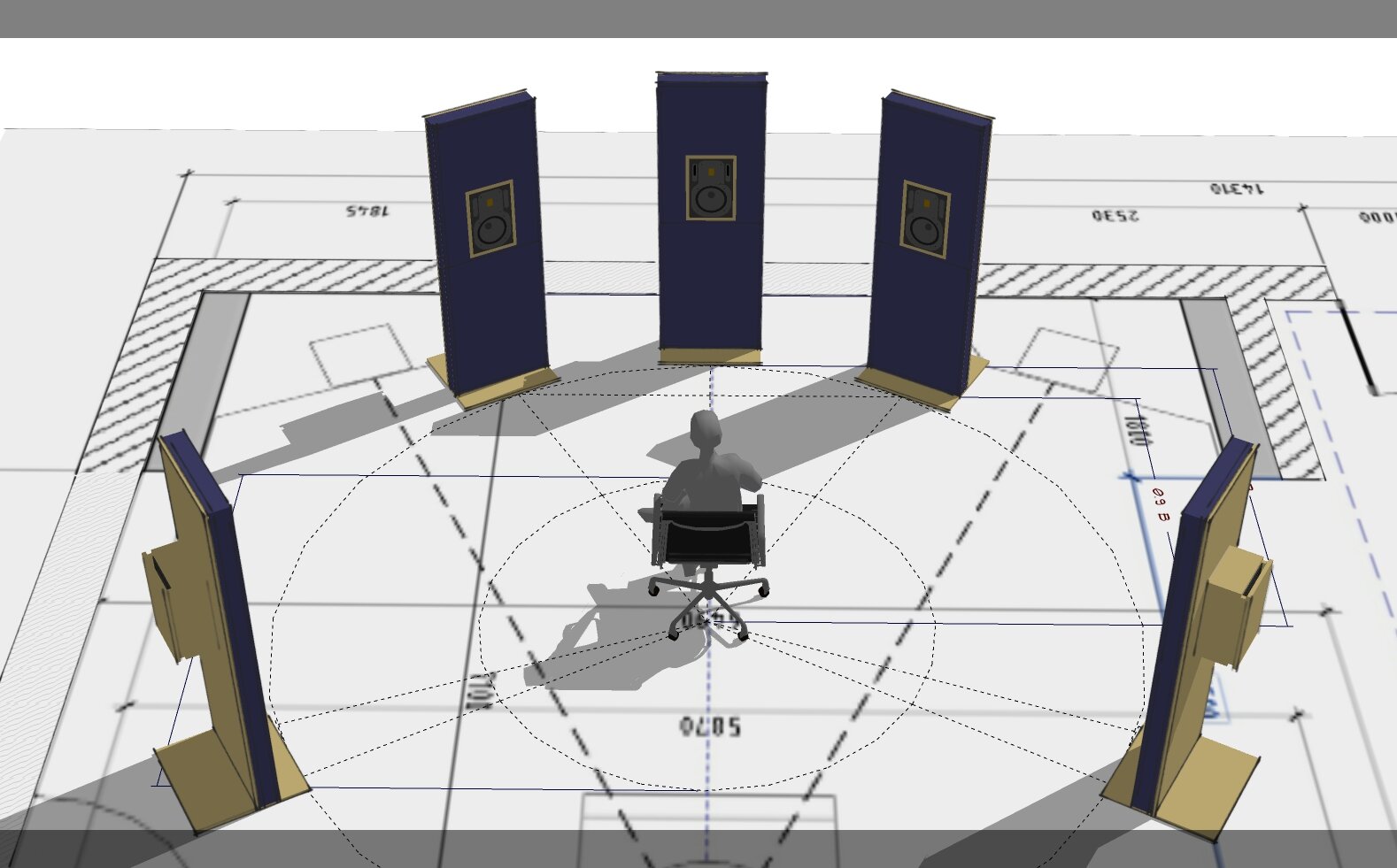-
Posts
2,301 -
Joined
-
Last visited
Everything posted by Glenn Stanton
-
hmmm. just checked -> the -3db setting is still there after doing all the steps. are you opening a default project/template - automagically? or just a blank console, no project or template set to auto-open?
-
hmmmm. for me, if i set it to -3db setting, then create a new project using the no tracks or busses in the new... dialog, the setting is the same, and if i create new using one of my templates, it switches to 0db, but then another new via the dialog it's the global setting. so maybe the stock templates use the 0db setting?
-
ah, resurrection of an old thread whereby the answer should have been RTFM, and then again ?
-
did you check your preference -> audio sections to ensure the interface is selected? for example, your usb interface may have been deselected when you knocked the wire out, and now you just need to reselect it, and then make sure your busses are then using that interface as then may have been set to none when you disconnected.
-

HOW to disable the track meter volume keeping only GAIN?
Glenn Stanton replied to Marcello's topic in Cakewalk by BandLab
you could set the volume faders to unity (0 on the console) and adjust gain knob to until you're peaking at -3db, or lower. then you can raise and lower as needed. as a note: the 0 mark on the meters does not indicate clipping on volume (as you noted), but you can still clip if the gain is too high. one option is to set your playback meter to "pre fader" which would exclude the level of the volume fader but would show you how the gain control and other in-line processing are effecting the gain. -
i think bit was thinking of the global driver settings: this can be changed per project / template - i.e. the global setting is stored in the project file and is set to that value when a project / template is opened. good to know!
-

wewantsamplerincakewalk Does Cakewalk need a sampler
Glenn Stanton replied to Anany Chaurasia's topic in Feedback Loop
marginal as in "not implemented well" ? in agreement we need one, but we also need a really good one ? -

wewantsamplerincakewalk Does Cakewalk need a sampler
Glenn Stanton replied to Anany Chaurasia's topic in Feedback Loop
maybe they're testing it out on the unsuspecting masses before building it into CbB ? best to get bugs and workflows sorted as much as possible with people looking for an easy to use integrated sampler before unleashing on the CW crowd (who tend to be tougher on marginal features ? ) -

Waves VST blocked by Windows security as trojan
Glenn Stanton replied to Sunraw's topic in Cakewalk by BandLab
this is a good choice for obtaining a "safe" copy of the product from some location, but if the developer is infected (and there have been many of those) then the hash doesn't help, and of course if someone embeds crooked code (ahem, you game manufacturers know this...) then it's even worse when you have a bad insider... -

Mono Track Converted to Stereo by Cakewalk [Solved]
Glenn Stanton replied to Bill Phillips's question in Q&A
perhaps the mono plugins are also confusing things. maybe try a different set of similar plugins to see if the problem is there so as to eliminate the plugin(s) which may be causing this behavior. once sorted, also reach out to the maker(s) of the plugins to have them look into it. the plugin may be sending incorrect information or mis-using an API call. -
and if you're interested in surround panning: http://dafx2018.web.ua.pt/papers/DAFx2018_paper_47.pdf http://www.music.mcgill.ca/marlonschumacher/wp-content/uploads/IMWI/literature/Spat1/Craven-Continuous_surround_panning_for_5-speaker_reproduction.pdf and if you're using timing delays to alter apparent depth of the instruments in a stereo or surround field, things start to get complex ?
-
i think it depends on the HW mixer - some taper off on a L-R move, some attempt to keep same level (which might raise levels), and some raise levels as you move to L-R. here's an example: a 1604 Mackie mixer uses "constant power" law - probably RMS 0db (which is probably fairly common in older analog mixers). i generally stick with the 0db sin/cos constant power setting in CbB.
-

Mono Track Converted to Stereo by Cakewalk [Solved]
Glenn Stanton replied to Bill Phillips's question in Q&A
maybe create a new track and make it mono, then drag, or otherwise load up, the same effects and see if they cause this behavior. for more tests - make it stereo and load up the effects and try to make it mono. or perhaps it's not only the first, but any stereo on a mono track causing this? -

Mono Track Converted to Stereo by Cakewalk [Solved]
Glenn Stanton replied to Bill Phillips's question in Q&A
all the tracks you show in the graphic appear to be mono tracks. as a general rule, if you select only a single input when recording a given track (e.g. IN (left) or IN (right)) you end up with a mono track clip. regardless of the interleave setting. if you select a stereo input (e.g. IN (stereo)) with a mono source, you'll have effectively a "dual mono" track clip. you could then bounce that track to mono (keeping in mind it doubles the level) in place, or use only left or right as a source to another track (which will then preserve the level but you now have a redundant track - after which you would copy that clip into your original track). or you can use an audio editor to perform that operation (close the project, open the audio file in your audio editor and correct it - i use this approach when people send me files as part of the preparation stage to clean up, de-noise, etc - but that's a different use case) -
you have to change the icon in the file, save it as a "normal" project file, then rename the extension to .cwt instead of .cwp. otherwise the image embedded will not change. if you open a .cwt file and a .cwp file you can see how the header of the file in the cwp contains a large MIME encoded image in the first part of the file, whereas the cwt files have the image embedded further into the file which is then used when you save the template-generated project as a cwp. here's the sequence: new (or existing project or project from a template you want to modify: add your image save as a "normal" project file rename .CWP as .CWT copy or move the file into the project templates folder when you open the start screen and select new project, you should see the template with the image if you want to change an existing image - use the RED X to remove then add a new image, remember to resave as CWP and RENAME to CWT
-

Importing and manipulating still images
Glenn Stanton replied to Ruby Gold's topic in Cakewalk by BandLab
maybe you could provide an understanding your need for still images in CbB would be helpful. there is the "video" capability which is designed to let you monitor the video while you compose, perform, or mix, but no editing of the video. so go get the image editing software (still and/or video) and use that. then if you need to sync with Cakewalk for creating or editing audio as part of the sound track, then you'll be all set. -

Importing and manipulating still images
Glenn Stanton replied to Ruby Gold's topic in Cakewalk by BandLab
GIMP (free) - a photoshop like app IrfanView (also free) - primarily a viewer but basic image editing possible Inkscape (free) - a vector editor but also useful for tracing images... -
@winkpain @Syphus so, in re-reviewing this, you save the template source file (with image, copyrights, etc) as "normal" in the "project template folder". this is a .cwp file in the template folder at this point. then rename the file as .cwt. now the template file has the image in the header section of the file (which is what needs to be read from the start screen display) as well as embedded in the file notes.
-
if you're using a loop. it needs to be in 6/8 time or you could use delays to simulate it. otherwise, if you're using guitar mode and strumming is set to auto, it should follow the time signature. check which articulations (switches) you use as they also impact the strumming. note that the "loops" are midi files which have some specific note controls you need to use, so you can create your own to fine tune your strumming patterns.
-
ah, no. The Beatles changed it for everyone around the world. all music is good. even the bad music. ?
-
you select the type as "template" and the folder as "template folder" ? then when you save the file it's added as a .cwt file into the project template folder ? i almost never bother with extensions and let the app sort it out...
-
a template is essentially a project file. if you have existing templates, you can edit to add or change the image like you would in a project, however you need to clear the cache of templates in the screen view otherwise they may not show up right away.
-
when you are editing the template, there is a browser section for adding notes, etc and includes adding an image.
-
maybe make a custom workspace and matching theme that does that?
-
what would be cool - a way to automate a chain of mix recalls so at each part of the song you could spend some time with changes, snapshot, perhaps re-use in another section (e.g. chorus) then automate them (say, in the arranger), and in some cases, reuse across projects (e.g. acoustic automation chain, rock automation chain etc as sort of a pre-mastering set of moves)




